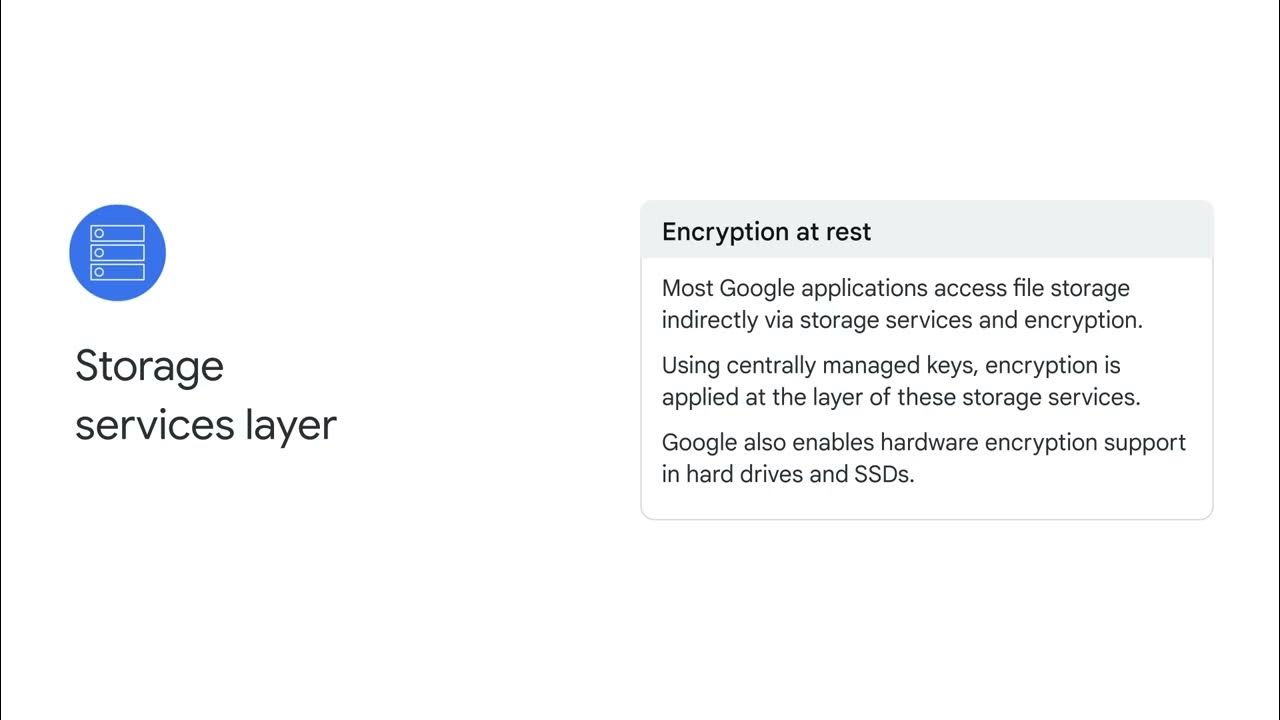The Google Cloud network
Summary
TLDRThis video explores Google Cloud's network architecture, detailing its global infrastructure. Google Cloud operates through regions and zones, connected by a vast private network of fiber optic cables, including submarine cable investments. Key networking products are introduced, including Virtual Private Cloud (VPC), Cloud Load Balancing, Cloud CDN, Cloud Interconnect, and Cloud DNS. These products enhance security, scalability, performance, and interconnection with enterprise-grade services, ensuring low-latency and cost-effective operations for users. The video highlights the comprehensive and advanced nature of Google Cloud’s global network.
Takeaways
- 😀 Google Cloud's network architecture includes regions, zones, points of presence (PoPs), and a global private network.
- 😀 Regions are specific geographical locations where users can run their resources, and the number on each region represents the zones within that region.
- 😀 PoPs (Points of Presence) are dark gray dots representing where Google's network connects to the rest of the internet.
- 😀 By having an extensive global network of interconnection points, Google Cloud reduces costs and improves user experience.
- 😀 Google's private network connects regions and PoPs via a vast network of fiber optic and submarine cables.
- 😀 Google has made new investments in cables, marked by the year next to them on the map, further expanding their infrastructure.
- 😀 Google Cloud services are integral to the architecture, supporting various networking functions for users.
- 😀 Google Cloud VPC (Virtual Private Cloud) offers comprehensive networking capabilities, allowing users to isolate resources for security and compliance.
- 😀 Cloud Load Balancing ensures high performance and scalable load balancing, maintaining consistent performance for users.
- 😀 Cloud CDN (Content Delivery Network) optimizes content delivery by reducing latency and costs, serving content from locations closer to users.
- 😀 Cloud Interconnect allows users to connect their infrastructure to Google’s network edge for enterprise-grade connectivity.
- 😀 Cloud DNS provides robust, high-volume DNS services to translate domain names into IP addresses, supporting production applications.
Q & A
What is Google Cloud's network architecture composed of?
-Google Cloud's network architecture is composed of regions, points of presence (PoPs), a global private network, and various Google services. Regions are geographical locations where resources can be run, while PoPs are interconnection points with the broader internet. The private network connects these regions and PoPs, forming a highly integrated system.
What does the number next to each region represent in the Google Cloud network map?
-The number next to each region represents the number of zones within that specific region. These zones are distinct locations within a region where cloud resources are deployed.
What role do Points of Presence (PoPs) play in Google Cloud's network?
-PoPs serve as the connection points where Google Cloud’s network interfaces with the rest of the internet. They are essential for reducing costs and enhancing user experience by bringing traffic closer to Google Cloud's peers.
How does Google Cloud’s private network improve user experience?
-Google Cloud’s private network improves user experience by providing faster, more reliable connections due to its extensive global infrastructure of fiber optic cables and submarine cables. This reduces latency and ensures more efficient data transfer across regions.
What does the year next to certain cables on the network map indicate?
-The year next to certain cables indicates the latest investments made by Google in their global network. These newer cables are part of the continuous effort to expand and upgrade the network for better performance.
What is Google Cloud VPC and what benefits does it offer?
-Google Cloud VPC (Virtual Private Cloud) is a comprehensive set of networking capabilities and infrastructure managed by Google. It allows users to connect and isolate their resources for security, compliance, and development purposes, making it useful for managing different environments like production or testing.
How does Cloud Load Balancing improve the performance of Google Cloud services?
-Cloud Load Balancing provides scalable and high-performance load balancing across Google Cloud services. It ensures consistent performance for users by distributing traffic efficiently across resources, even during peak loads.
What is the function of Cloud CDN in Google Cloud's network?
-Cloud CDN (Content Delivery Network) serves content to end users with high availability and performance. It reduces latency and costs by caching content close to the users' locations, ensuring fast delivery of files and content.
How does Cloud Interconnect benefit users connecting to Google Cloud?
-Cloud Interconnect allows users to connect their infrastructure to Google Cloud’s network edge with enterprise-grade connections. This ensures a more reliable and faster connection compared to standard internet links, often with higher service levels.
What is the role of Cloud DNS in Google Cloud services?
-Cloud DNS (Domain Name System) translates domain name requests into IP addresses. It provides a scalable and high-performance DNS service, suitable for production applications, helping ensure users can access services using human-readable domain names.
Outlines

This section is available to paid users only. Please upgrade to access this part.
Upgrade NowMindmap

This section is available to paid users only. Please upgrade to access this part.
Upgrade NowKeywords

This section is available to paid users only. Please upgrade to access this part.
Upgrade NowHighlights

This section is available to paid users only. Please upgrade to access this part.
Upgrade NowTranscripts

This section is available to paid users only. Please upgrade to access this part.
Upgrade Now5.0 / 5 (0 votes)





